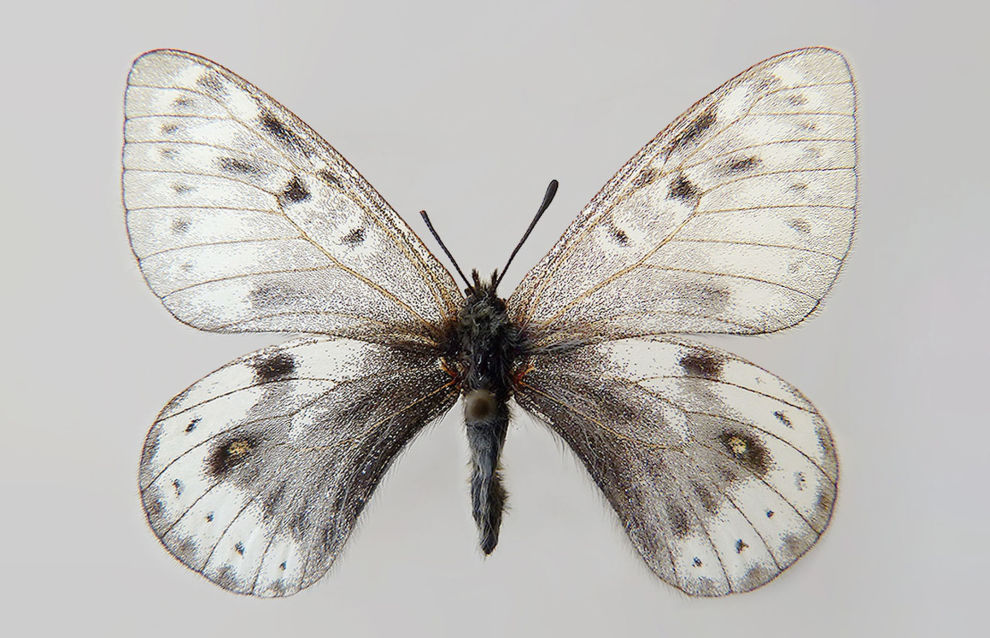New subspecies of Arctic butterfly discovered in Yakutia
A new subspecies of Arctic butterfly has been studied and described by scientists from Tomsk and Altai state universities. The subspecies lives only in Yakutia in the uplands of the Arga-Tas mountain range. A naturalist from Lipetsk, Yury Bakhayev, discovered the new insect. A scientific article published in the Ecologica Montenegrina journal (Q1) describes the previously unknown representative of northern fauna.
“The Arctic Apollo butterfly (Parnassius arcticus) is a unique and the northernmost species endemic to the Arctic, to northeastern Yakutia. Several populations are known to live scattered at a distance of 200–500 km on the high mountain Verkhoyansk, Momsk and Suntar-Khayata ranges. These are remote areas, it is extremely difficult to get there, so the local biodiversity is poorly studied,” said Roman Yakovlev (Ph.D. in Biology), a scientist at the Biological Institute of TSU and ASU.
One of the characteristics of the Parnassius arcticus is that it is monophagous: its caterpillars feed only on one plant, the Corydalis gorodkovii. In addition, the Parnassius arcticus is almost the only species of diurnal butterfly that lives in the highlands of the mountain ranges of northeastern Yakutia.
Naturalist Yury Bakhayev, a journalist from Lipetsk, discovered this rare subspecies and also co-authored the scientific article. For many years, he has been studying northern nature, choosing remote and completely unexplored areas for expeditions.
“A previously undiscovered subspecies of northern butterfly was found in the uplands of the Arga-Tas mountain range. The subspecies has a clear external difference from other representatives of Parnassius arcticus and, at the same time, has significant genetic differences. We dedicated the description of this representative of northern fauna to Roman Shavlov, an amateur naturalist from Yakutsk, who has been studying northern nature for many decades. The new subspecies was named Parnassius arcticus shavlovi in his honor,” Roman Yakovlev explains.
The specialist noted that northern fauna is very sensitive to warming, so scientists use it as an indicator of climate change. New fundamental data obtained in the course of research will become the starting point in studying the development of northern fauna and monitoring the environmental transformation in the Arctic.
